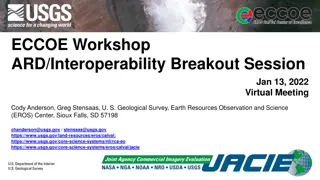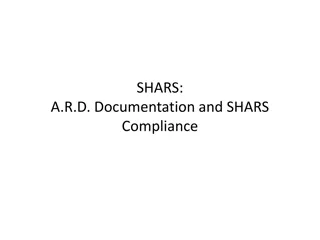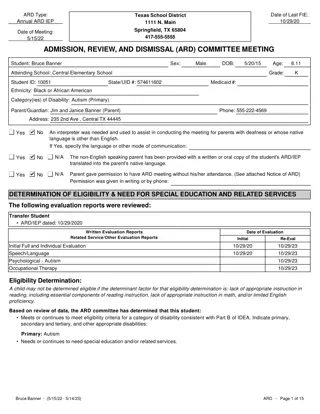
Collaborative Strategies for Enhancing Institutional Relationships in Agriculture and Research
Learn key strategies to enhance collaboration between 1890 and 1862 colleges in the agricultural and research domains. Foster open communication, cooperation, and mutual respect to maximize outcomes and address industry needs effectively.
Uploaded on | 1 Views
Download Presentation

Please find below an Image/Link to download the presentation.
The content on the website is provided AS IS for your information and personal use only. It may not be sold, licensed, or shared on other websites without obtaining consent from the author. If you encounter any issues during the download, it is possible that the publisher has removed the file from their server.
You are allowed to download the files provided on this website for personal or commercial use, subject to the condition that they are used lawfully. All files are the property of their respective owners.
The content on the website is provided AS IS for your information and personal use only. It may not be sold, licensed, or shared on other websites without obtaining consent from the author.
E N D
Presentation Transcript
2023 ARD-SAAESD Joint Meeting Atlanta Airport Marriott August 9-10, 2023 Coming together is a beginning Keeping together is progress Working together is success - Henry Ford -
Session 1: Session 1: Building Relationships with Trust and Mutual Respect Building Relationships with Trust and Mutual Respect Donovan L. Segura, Associate Vice Chancellor for Equity, Inclusion, & Title IX, Southern University Session 2: Getting to One LGU System Session 2: Getting to One LGU System Doug Steele, Vice President of Food, Agriculture, and Natural Resources, APLU Meeting Agenda Meeting Agenda Session 3: Communicating Within, Among, and Beyond Our Institutions Session 3: Communicating Within, Among, and Beyond Our Institutions Latasha Ford, Research Communications Specialist, Fort Valley State University Cassie Ann Kiggen, Chief Communications Officer, CAES, University of Georgia Faith Peppers, Director of Communications, USDA National Institute of Food and Agriculture Session 4: Justice 40 and Environmental Justice Session 4: Justice 40 and Environmental Justice Kevin Kephart, Deputy Director, Institute of Bioenergy, Climate, and Environment, USDA NIFA Session 5: Building Interdisciplinary Research Teams Session 5: Building Interdisciplinary Research Teams Amy Grunden, Assistant Director, NCARS, North Carolina State University Greg Goins, Associate Dean for Research, North Carolina Agricultural and Technical State University Session 6: Engaging stakeholders in the Southern Region Session 6: Engaging stakeholders in the Southern Region Olga Bolden-Tiller, Dean, College of Agriculture, Environment and Nutritional Sciences, Tuskegee University
Take-aways: Create Positive Interactions 1. Open Communication Channels:Establish open lines of communication between 1890 and 1862 colleges. This includes regular meetings, conferences, and shared communication platforms. Encourage administrators, faculty, and staff to exchange ideas and updates on research, projects, and initiatives. 2. Foster a Culture of Cooperation:Create a culture that promotes cooperation rather than competition. Emphasize the idea that working together can lead to better outcomes for both types of institutions. Highlight success stories of past collaborations to inspire others. 3. Recognize and Value Expertise:Recognize and respect the unique expertise that each institution brings to the table. This includes acknowledging the historical and cultural significance of 1890 colleges and the research and innovation capacity of 1862 colleges. Avoid stereotypes and biases that may hinder collaboration. 4. Align Strengths and Needs:Compare the strengths and expertise of each institution with the identified needs. Seek areas of alignment where the universities can collaborate effectively to address those needs. This alignment might involve research, education, or outreach initiatives. 5. Assess Strengths and Expertise:Conduct a comprehensive assessment of the strengths, expertise, and resources available at each institution. Identify areas where each university excels and where they have specific expertise.
Take-aways: Establish Joint Collaborations 1. Joint Projects and Research Initiatives:Enable joint projects and research initiatives that capitalize on the strengths and resources of both types of institutions. This could involve interdisciplinary teams, shared funding opportunities, and collaborative grant applications. Incentivize and reward faculty who participate in these collaborations. 2. Interdisciplinary Collaboration:Encourage interdisciplinary collaboration by bringing together experts from various fields within both institutions. Many agricultural challenges require a multifaceted approach, and the collective expertise of both universities can be harnessed for innovative solutions. 3. Shared Resources:Explore opportunities for sharing resources, whether it's research facilities or specialized equipment. This can reduce duplication of efforts and enhance the overall capabilities of both types of institutions, maximizing the efficiency and impact of collaborative efforts. 4. Student and Faculty Exchanges:Facilitate student and faculty exchanges between 1890 and 1862 colleges. This can promote cross-pollination of ideas, build relationships, and provide learning opportunities for everyone involved. 5. Shared Educational Programs:Develop shared educational programs that offer students exposure to a broader range of expertise and experiences. This could include joint courses, exchange programs, or dual- degree offerings.
Take-aways: Outreach and Communication 1. Joint Outreach and Extension Programs:Collaborate on community outreach and Extension programs to disseminate research findings, provide training, and offer support to local farmers and agricultural businesses. These programs can have a direct and positive impact on the agricultural community, creating channels for receiving feedback from stakeholders and the public. Act on constructive feedback to improve the relevance and impact of your research programs. 2. Joint Stakeholder Engagement:Involve local communities, farmers, industry partners, and other relevant stakeholders in the design and implementation of collaborative programs. Their input can provide valuable insights and ensure that initiatives are well-received and effective. Organize workshops, webinars, and meetings to present research findings and gather feedback. 3. Impact Stories:Develop impact stories and social media posts that demonstrate how your joint research has improved agricultural practices or positively affected local communities. Use metrics and data to track the reach and impact of your communication efforts. Evaluate the effectiveness of different communication channels and adjust your strategy accordingly. 4. Communications Education and Training:Offer training sessions and workshops on effective science communication to researchers and students. Building communication skills within the research community can enhance the dissemination of research findings.
Take-aways: Administrative Expectations 1. Leadership Support:Encourage leadership at both 1890 and 1862 colleges to actively support and promote collaboration. Having buy-in from top-level administrators can be instrumental in fostering a culture of cooperation. 2. Monitoring and Evaluation:Establish mechanisms for continuous monitoring and evaluating the effectiveness of collaborative programs. Regularly assess whether the programs are meeting their intended goals. Solicit feedback from stakeholders and adjust as needed to ensure that the relationship remains productive and beneficial. 3. Conflict Resolution Mechanisms:Establish clear conflict resolution mechanisms to address any disagreements or misunderstandings that may arise during collaboration. Open and respectful dialogue is key to resolving issues promptly. 4. Co-engage in Advocacy:Engage with policymakers at the state and national levels. Share research findings that have policy implications and advocate for evidence-based agricultural policies and practices. 5. Long-Term Commitment:Recognize that building and sustaining successful collaborative programs takes time and commitment. Encourage both institutions to commit to long-term partnerships for lasting impact.








